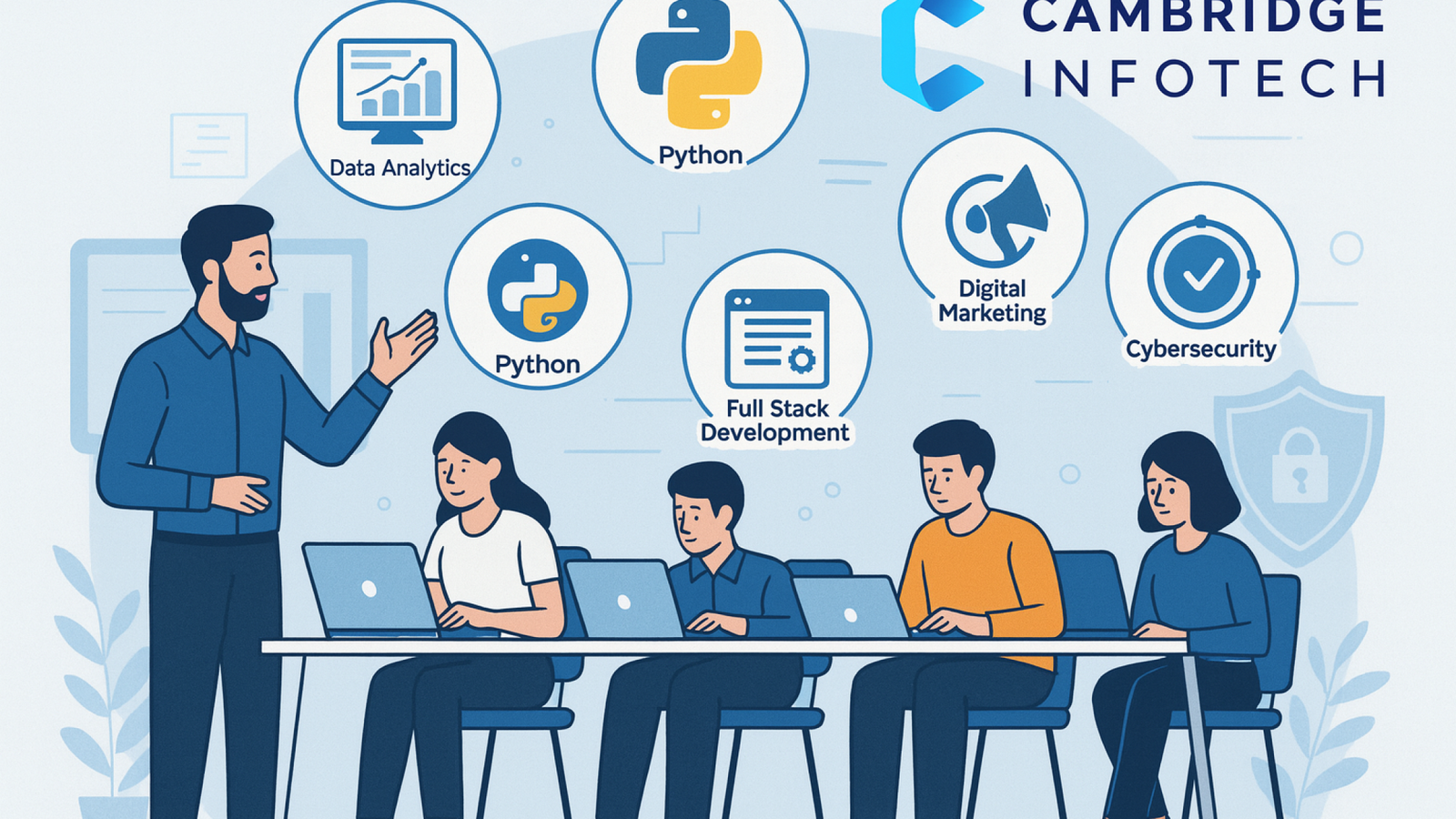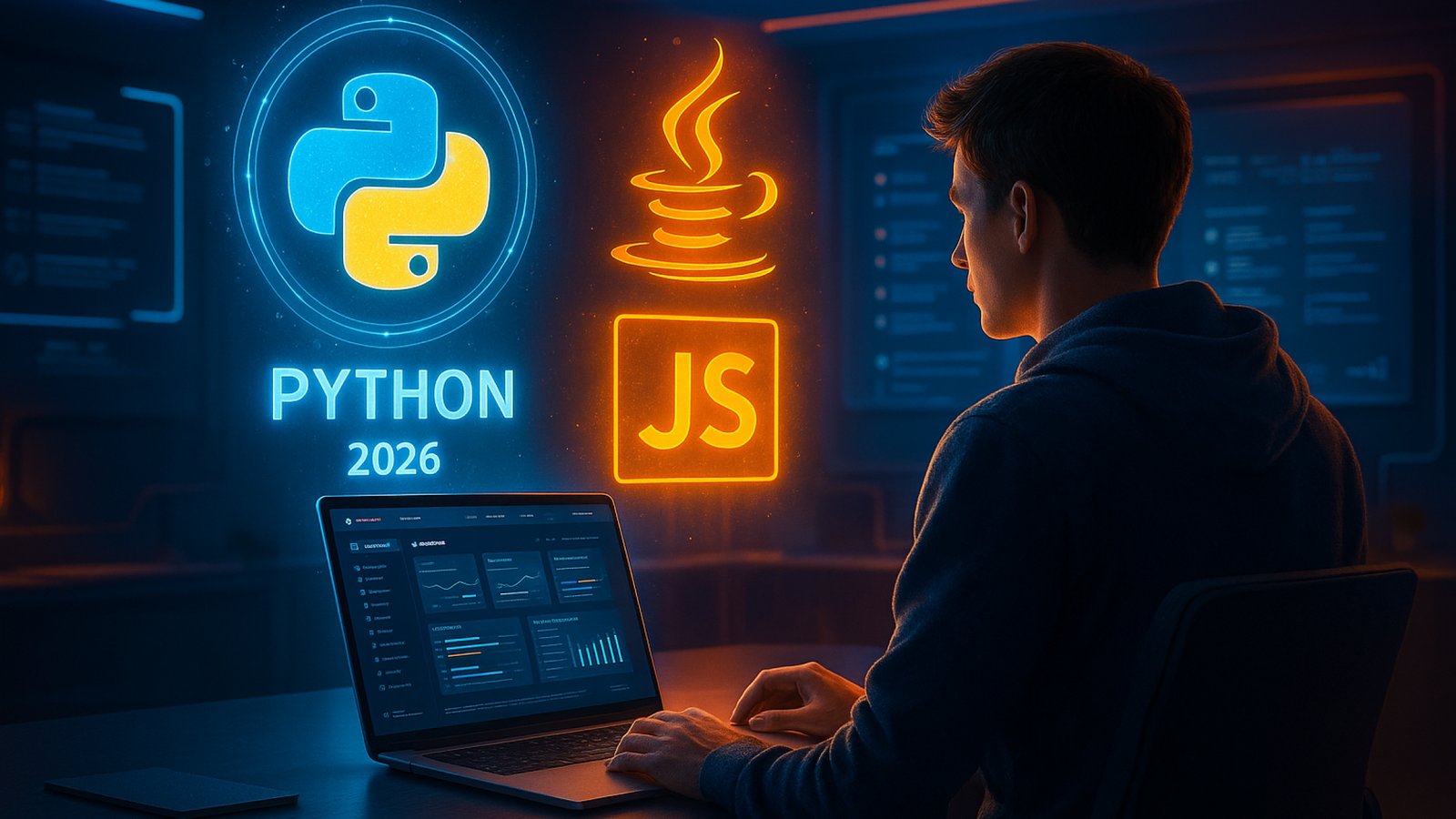Generative AI Career Path: Opportunities, Roles & Growth Potential

Introduction
If you’re looking for a career that is future-proof, intellectually stimulating, and highly rewarding, you’ve found it. This comprehensive guide will map out your generative AI career path, detailing the roles you can target, the skills you need to acquire, the salaries you can expect, and the exact steps to take to land your first job in this exciting field. At Cambridge Infotech, we’re at the forefront of this revolution, and we’re here to help you build the expertise that the market desperately needs.
What Exactly is a “Generative AI Career Path”?
A career in this field isn’t a single job title. It’s a spectrum of interconnected roles spanning research, engineering, ethics, and application. Your path will depend on your existing background—be it software engineering, data science, design, or even a non-technical field—and how you choose to pivot and specialize.
Why Choose a Career in Generative AI? The Irresistible Value Proposition
The hype is real, and it’s backed by staggering data.
Explosive Market Growth: The generative AI market is projected to grow from USD 40.0 billion in 2022 to USD 1.3 trillion by 2032, a compound annual growth rate (CAGR) of 42%. This isn’t a bubble; it’s a fundamental technological shift on par with the advent of the internet or the smartphone.
Massive Talent Shortage: Demand for AI skills drastically outstrips supply. A report from [Source: LinkedIn Economic Graph] shows that job posts mentioning GPT or Generative AI have seen a dramatic increase, but the number of members with these skills is still relatively low. This means less competition for roles and more leverage for qualified candidates.
Sky-High Salaries: Due to the talent crunch, salaries are exceptionally competitive, even for entry-level positions. We’ll break these down in detail later.
Intellectual Challenge & Impact: You will be working on cutting-edge problems that have tangible, world-changing impacts—from accelerating drug discovery to creating personalized education tools and solving complex environmental challenges.
Future-Proofing: AI skills are becoming the new literacy. Building a career here isn’t just about a job today; it’s about ensuring your skills remain relevant and in-demand for decades to come.
The Generative AI Career Landscape: Key Roles and Responsibilities
The ecosystem of jobs in generative AI is diverse. Here are the most prominent roles defining the current generative AI career path.
1. Generative AI Engineer / Researcher
This is the core research and development role, often requiring an advanced degree.
Responsibilities: Designing novel neural network architectures (like GANs, VAEs, and Transformers), training and fine-tuning large foundational models, researching new algorithms for improved efficiency and output quality, and pushing the boundaries of what’s possible.
Who it’s for: PhDs or Masters in Computer Science, Machine Learning, or a related field with a strong publication record. This is a highly technical, math-intensive role.
2. Machine Learning Engineer (MLE) with a Generative AI Focus
The MLE bridges the gap between research and production. This is one of the most common and in-demand roles.
Responsibilities: Taking models from researchers and optimizing them for scale, deploying them into production environments, building robust ML pipelines for continuous training and deployment (MLOps), and ensuring model performance and reliability.
Who it’s for: Software engineers with strong data structures and algorithms knowledge who have upskilled into machine learning. A formal advanced degree is less critical than demonstrable engineering skills.
3. NLP Engineer / Scientist (Specializing in LLMs)
A specialist role focused exclusively on text-based generative AI, like Large Language Models (LLMs).
Responsibilities: Fine-tuning pre-trained LLMs (e.g., GPT, LLaMA) for specific tasks (chatbots, content summarization, translation), working on tokenization, text embeddings, and natural language understanding/generation tasks.
Who it’s for: Those with a background in linguistics, computational linguistics, or general ML who want to deep-dive into the text modality.
4. AI Prompt Engineer
A newer, fascinating role that has emerged directly from the rise of user-facing generative AI tools.
Responsibilities: Designing, testing, and refining precise text prompts to get the desired output from generative AI models. This requires a deep understanding of how a model “thinks,” creativity, and iterative testing. It also involves building libraries of effective prompts for specific use cases.
Who it’s for: Excellent writers, domain experts, and curious tinkerers. While technical knowledge helps, it’s not always a strict requirement. This can be a fantastic entry point into the field for non-traditional candidates.
5. AI Product Manager
The person who guides the “why” and “what” of an AI product.
Responsibilities: Identifying market opportunities for generative AI, defining product requirements, working with engineers and researchers to prioritize features, and overseeing the product’s strategy and roadmap. They must understand the capabilities and limitations of the technology to set realistic goals.
Who it’s for: Experienced product managers who can rapidly learn the generative AI domain, or technical AI practitioners moving into a strategic role.
6. AI Ethics & Governance Specialist / Responsible AI Lead
Perhaps the most critical emerging role, ensuring this powerful technology is developed and used safely and fairly.
Responsibilities: Developing frameworks to mitigate AI bias, ensuring model transparency and explainability, working on AI safety and alignment to human values, and helping companies comply with emerging AI regulations (like the EU AI Act).
Who it’s for: Individuals with a background in ethics, law, policy, or social science, combined with a strong technical understanding of how AI systems work.
7. AI Solutions Architect
The technical sales and customer-facing expert.
Responsibilities: Understanding client needs and designing tailored generative AI solutions using existing platforms and tools (e.g., leveraging OpenAI, AWS Bedrock, Google Vertex AI). They create proofs-of-concept and articulate the technical value proposition to clients.
Who it’s for: Experienced engineers or consultants with excellent communication skills who enjoy solving business problems with technology.
The Skills Stack: What You Need to Learn for Your Generative AI Career Path
Building a career here requires a blend of foundational knowledge, specialized skills, and soft skills.
Foundational & Technical Skills (The Non-Negotiables):
Programming: Proficiency in Python is an absolute must. Familiarity with R or Julia can be a bonus.
Mathematics: A solid grasp of Linear Algebra (vectors, matrices, tensor operations), Calculus (especially gradients and derivatives for training models), Probability and Statistics (distributions, statistical tests) is crucial for understanding what’s happening under the hood.
Machine Learning Fundamentals: You must understand core ML concepts like supervised vs. unsupervised learning, training/testing splits, overfitting, and evaluation metrics. Start with traditional models before diving into deep learning.
Core Generative AI & Deep Learning Skills:
Deep Learning Frameworks: Mastery of TensorFlow and/or PyTorch is essential. PyTorch is currently the framework of choice for most research and development.
Neural Network Architectures: You need an in-depth understanding of:
Transformers: The architecture that powers all modern LLMs (BERT, GPT). Understand attention mechanisms, tokenization, and encoder/decoder structures.
GANs (Generative Adversarial Networks): Pioneers of image generation.
VAEs (Variational Autoencoders): Effective for learning latent representations and generating data.
Diffusion Models: The current state-of-the-art for high-fidelity image generation (e.g., DALL-E, Midjourney, Stable Diffusion).
Large Language Models (LLMs): Knowledge of prompt engineering, fine-tuning techniques (like LoRA), retrieval-augmented generation (RAG), and how to work with APIs for models like GPT-4.
MLOps (Machine Learning Operations): The practice of deploying and maintaining ML models in production. This involves knowledge of Docker, Kubernetes, cloud platforms (AWS, GCP, Azure), and CI/CD pipelines for ML.
Soft Skills & Business Acumen:
Problem-Solving: The ability to decomplexify vague, complex problems.
Creativity: Thinking outside the box to prompt models effectively or devise novel solutions.
Communication: Explaining complex technical concepts to non-technical stakeholders is a superpower.
Ethical Reasoning: A strong moral compass to navigate the complex implications of AI.
Generative AI Salary Expectations: What Can You Earn?
Salaries vary based on role, experience, location, and company size. However, they are consistently high across the board. Here’s a breakdown (figures are approximate and in USD, for the US market; other regions may vary)
| Role | Entry-Level (0-2 yrs) | Mid-Level (3-5 yrs) | Senior-Level (5+ yrs) |
|---|---|---|---|
| Generative AI Engineer | $120,000 – $150,000 | $150,000 – $220,000 | $220,000 – $300,000+ |
| ML Engineer (Gen AI Focus) | $110,000 – $140,000 | $140,000 – $200,000 | $200,000 – $280,000+ |
| NLP Engineer (LLMs) | $115,000 – $145,000 | $145,000 – $210,000 | $210,000 – $290,000+ |
| AI Prompt Engineer | $90,000 – $120,000 | $120,000 – $160,000 | $160,000 – $200,000+ |
| AI Product Manager | $100,000 – $130,000 | $130,000 – $180,000 | $180,000 – $250,000+ |
| AI Ethics Specialist | $95,000 – $125,000 | $125,000 – $170,000 | $170,000 – $220,000+ |
Note: At top tech companies (FAANG+) and well-funded startups, these figures can be significantly higher, often including substantial stock options and bonuses.
Your 6-Step Generative AI Career Path Action Plan
Ready to start? Here’s your strategic roadmap.
1: Build a Rock-Solid Foundation
Don’t skip the basics. Enroll in online courses to cement your understanding of:
Python programming
Core mathematics (Linear Algebra, Calculus, Stats)
Traditional Machine Learning
Resources: Coursera’s Machine Learning Specialization (by Andrew Ng), edX’s MIT Linear Algebra course.
2: Dive into Deep Learning and Specialize
Move from traditional ML to deep learning. Then, choose your specialization: NLP/LLMs, Computer Vision, or multimodal models.
Practical Deep Learning for Coders (fast.ai), Deep Learning Specialization (Coursera).
3: Get Hands-On with Projects
Theory is nothing without practice. Build a portfolio of projects that showcase your skills.
Idea: Fine-tune an open-source LLM like Llama 2 or Mistral on a specific dataset (e.g., legal documents, medical journals) to create a specialized chatbot.
Idea: Build a RAG (Retrieval-Augmented Generation) system that can answer questions about your own documents.
Idea: Train a image generation model using Stable Diffusion on a custom dataset to create a specific art style.
Host all your code on GitHub with excellent documentation.
4: Contribute to the Open-Source Community
Engage with the community on GitHub, Hugging Face, and AI forums. Contribute to projects, report bugs, or create your own libraries. This builds your reputation and network. Hugging Face is the epicenter for this.
5: Formalize Your Knowledge (Optional but Beneficial)
Consider a professional certification to validate your skills and stand out to employers. A structured program can provide a curated curriculum and mentorship.
Looking for a structured path? Explore Cambridge Infotech’s Generative AI Certification Program, designed by industry experts to take you from fundamentals to deployment in a hands-on, project-driven environment. <– (Internal Link Opportunity – link to your specific course page)
6: Network and Apply Strategically
Network: Attend AI meetups, conferences (NeurIPS, ICML), and webinars. Connect with professionals on LinkedIn and engage with their content.
Tailor Your Resume: For each application, highlight the projects and skills most relevant to the specific generative AI career path role you’re targeting. Use keywords from the job description.
Prepare for Interviews: Expect a mix of coding challenges, deep theoretical questions on ML/DL, and system design questions focused on scaling AI systems.
The Future of Generative AI Careers
The field will continue to evolve rapidly. Here’s what to watch:
Multimodality: Models that seamlessly understand and generate across text, image, audio, and video will become the norm.
AI Agentic Workflows: AI systems that can perform multi-step tasks autonomously will create new roles in designing and overseeing these agents.
Specialized vs. General Models: There will be a boom in demand for experts who can build and fine-tune small, specialized, and efficient models for specific industries versus using massive general-purpose ones.
Regulation and Ethics: As government regulations tighten, the demand for AI Governance and Ethics roles will skyrocket.
FAQs
1. What is a Generative AI career path?
A Generative AI career path refers to the professional journey of individuals specializing in artificial intelligence technologies that can create content such as text, images, music, and code. It includes roles like AI engineer, prompt engineer, data scientist, and AI researcher.
2. Why should I choose a Generative AI career path?
The Generative AI career path offers high-paying opportunities, growing global demand, and the chance to work on innovative projects shaping the future of industries like healthcare, finance, entertainment, and education.
3. What skills are required for a Generative AI career path?
To excel in a Generative AI career path, you need skills in Python programming, machine learning, deep learning frameworks (TensorFlow, PyTorch), natural language processing (NLP), prompt engineering, and strong mathematical foundations in statistics and linear algebra.
4. Do I need a coding background for the Generative AI career path?
Yes, a coding background is highly recommended for the Generative AI career path. However, non-coding roles like AI project management, AI ethics, and AI product management are also emerging.
5. What job roles are available in the Generative AI career path?
Common job roles in the Generative AI career path include:
Generative AI Engineer
Machine Learning Engineer
Data Scientist
AI Research Scientist
Prompt Engineer
AI Product Manager
6. How much salary can I expect in the Generative AI career path?
Salaries vary depending on location and expertise. In India, Generative AI professionals can earn between ₹8 LPA – ₹40 LPA, while in the U.S., the range is $100,000 – $300,000+ annually, depending on skills and experience.
Conclusion
The generative AI career path is one of the most exciting and rewarding professional journeys available today. It demands dedication, continuous learning, and a passion for innovation, but the returns—intellectual, professional, and financial—are immense. The market need is clear, the tools are accessible, and the community is welcoming. The only question that remains is whether you will take the first step.
Call to Action
Don’t just follow the future—create it with Generative AI.
Enroll today and take the first step towards your dream AI career.
Call us now at – 099024 61116
Visit our Website: cambridgeinfotech.io/
Check Out Related Blogs
Content Marketing Career Path: How to Start, Grow & Succeed in 2025
How to Become Affiliate Marketer with No Experience (Start Earning Online Today!
Difference Between GEO and AEO in Digital Marketing – Key Strategies, Benefits & Future Trends
How to Become a Power BI Developer: Complete Career & Salary Guide 2025









